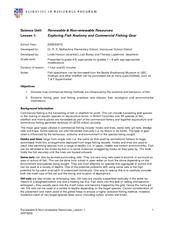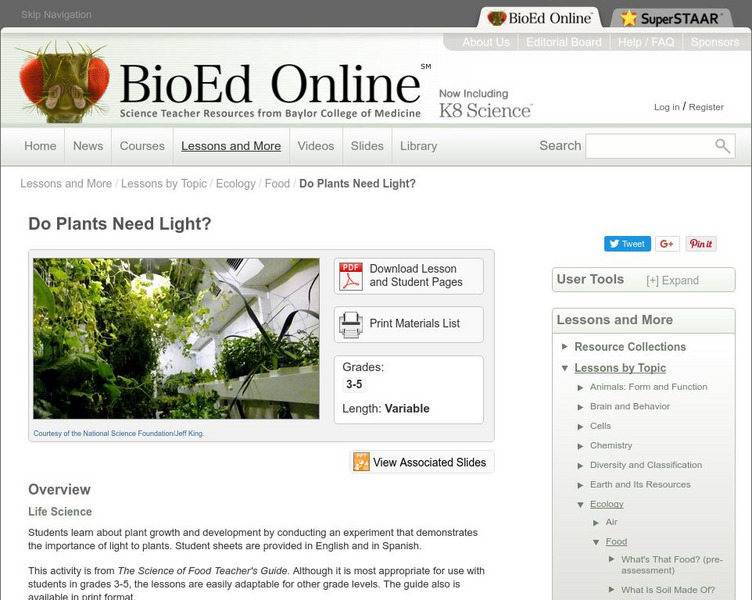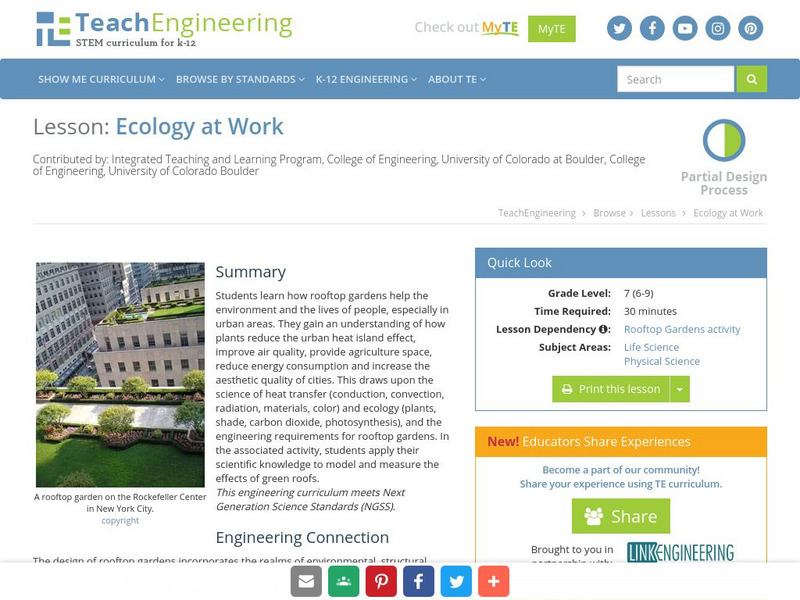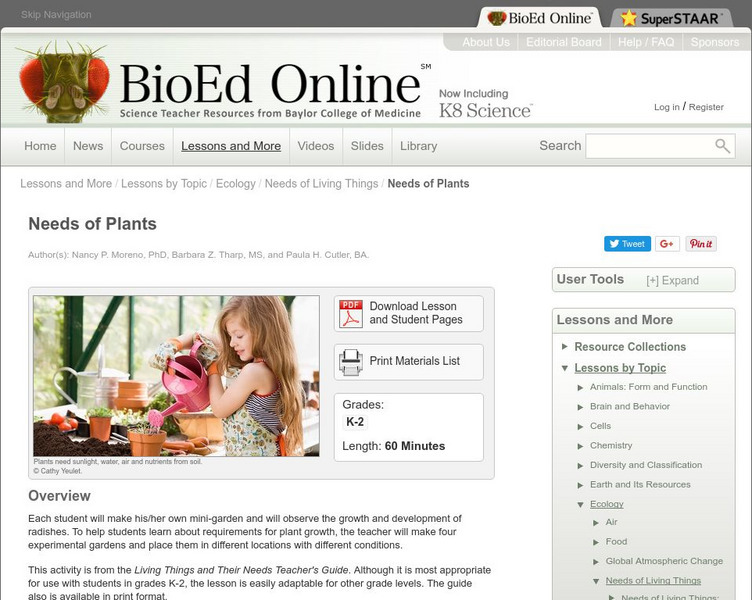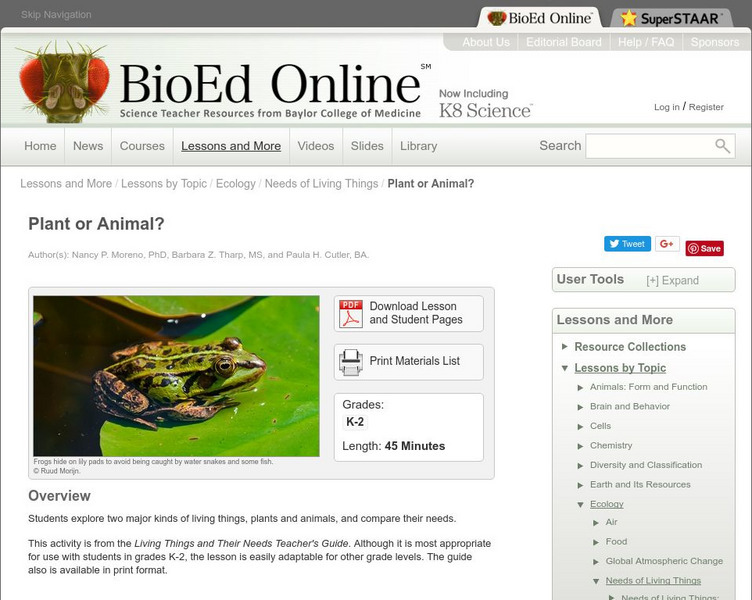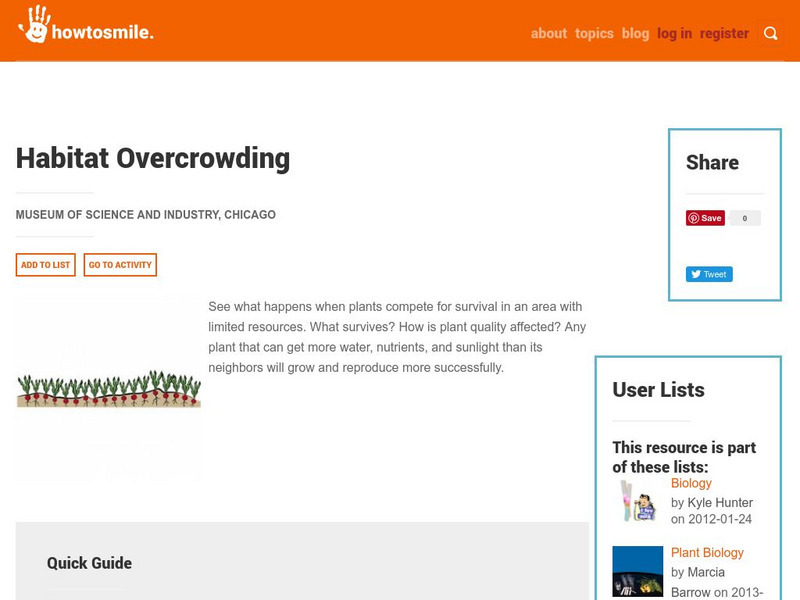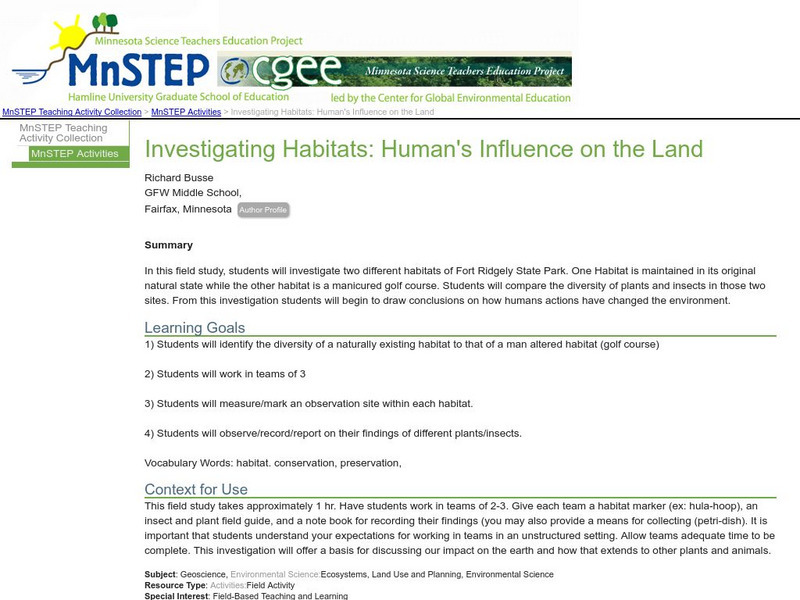Curated OER
Who Can Harvest A Walleye?
Seventh graders investigate the concept of how an ecosystem is put together while conducting research using a variety of resources. They correctly differentiate between a herbivore and carnivore by placing them in the order of hierarchy...
Curated OER
Butterfly Lesson
Students identify that Idaho is a home to 168 species of butterflies and they are an important part of many habitats. They also identify how to use the Digital Atlas of Idaho and write a report regarding information of their assigned...
Curated OER
Exploring Fish Anatomy and Commercial Fishing Gear
Students investigate commercial fishing by exploring the technical methods. In this environmental lesson, students identify the fish that are most commonly consumed by humans and trace their path from ocean to plate. Students examine...
BioEd Online
Bio Ed Online: Do Plants Need Light?
Plants need air, water, soil, and light to grow. Students learn about plant growth and development by conducting an experiment that demonstrates the importance of light to plants.
Other
Ohio Dept. Of Education: Plants and Animals Around the Year
This is a unit for Grade Two where students investigate the plants and animals found in their schoolyard and prepare a poster display.
TeachEngineering
Teach Engineering: Ecology at Work
Young scholars learn how rooftop gardens help the environment and the lives of people, especially in urban areas. They gain an understanding of how plants reduce the urban heat island effect, improve air quality, provide agriculture...
BioEd Online
Bio Ed Online: Needs of Plants
Each student will make his/her own mini-garden and will observe the growth and development of radishes. To help students learn about requirements for plant growth, the teacher will make four experimental gardens and place them in...
BioEd Online
Bio Ed Online: Living Things and Their Needs: Plant or Animal?
In this lesson, students investigate and compare the needs of plants and animals. The lesson can be downloaded in PDF format.
BioEd Online
Bio Ed Online: Plant Parts You Eat
Did you know that some plant parts are edible? People rely on many different plants and plant parts for food. For this lesson students observe and investigate different plant-originated foods, and learn about plant parts.
Science Education Resource Center at Carleton College
Serc: Ecosystem Study
Studets investigate the health of an ecosystem and the effects of water, sunlight, nutrients or pollutants. They determine the change in the environment through observation, journaling, and measuring growth of the plants and living...
Science Education Resource Center at Carleton College
Serc: Courtyard Observations One Small Step
Students observe a one square foot area to make detailed observations of plants, animals, and insects outdoors in the school courtyard.
Science Education Resource Center at Carleton College
Serc: Studying Eco Climatic Domains
After learning about the climates of different ecological regions of the United States, students investigate the impact of climate change on plants that live in those regions. By looking at changes over time, they can better understand...
Environmental Education for Kids
Eek!: Activity: Trees and Air Quality
Site offers lessons and activities designed to supplement study of the environment and ecology. Concise explanations are presented on the importance of trees in our world. Also, problem solving and creative thinking is encouraged...
University of Illinois
University of Illinois Extension: Natural Resources, Environment, and Ecosystems
A collection of lesson plans for specific age levels to help students gain a better understanding of animals, plants, and people, and how they affect each other in ecosystems. Many of the activities provide discussion questions and...
Better Lesson
Better Lesson: Butterfly Bush Visitors
In this instructional activity, the children learn about how critters depend on the butterfly bush and how the butterfly bush, in turn, depends on it. Common Core writing skills are integrated as they take it to the next step, and create...
Science Education Resource Center at Carleton College
Serc: Mn Step: Schoolyard Bio Blitz
For this activity, middle schoolers visit a small section of the schoolyard and record observations in a scientific journal. They will observe different things as the school year progresses, including ecological relationships, human...
Other
National Science Digital Library: Smile: Habitat Overcrowding
Experiment with crowd control in a garden. Students will test what happens to radish plants observing who survives, who gets the most food, water and sunlight.
TeachEngineering
Teach Engineering: How Clean Is That Water?
This lesson plan helps middle schoolers understand the factors that affect water quality and the conditions that allow for different animals and plants to survive. Students will look at the effects of water quality on various...
Science Education Resource Center at Carleton College
Serc: Investigating Habitats: Human's Influence on the Land
Students will investigate two different habitats; one habitat is maintained in its original natural state while the other habitat is a manicured golf course. Students will identify and compare the diversity of plants and insects in those...
Teachers.net
Teachers.net: Acid Rain Go Away
in this lesson plan students conduct an experiment to find out how acid rain can harm plants.
BioEd Online
Bio Ed Online: Living Things and Their Needs: We Need Water
This lesson plan focuses on living things' need for water. Students make lemonade and learn that water can be found in liquids other than a glass of water, and is also found in plants. The lesson plan can be downloaded in PDF format.
Discovery Education
Discovery Education: Lesson Plans Library K 5
This resource presents a lesson plan library which holds hundreds of lesson plans organized by grade level and subject area. Often rooted with an Internet research piece, each lesson plan contains specific objectives, procedures,...




